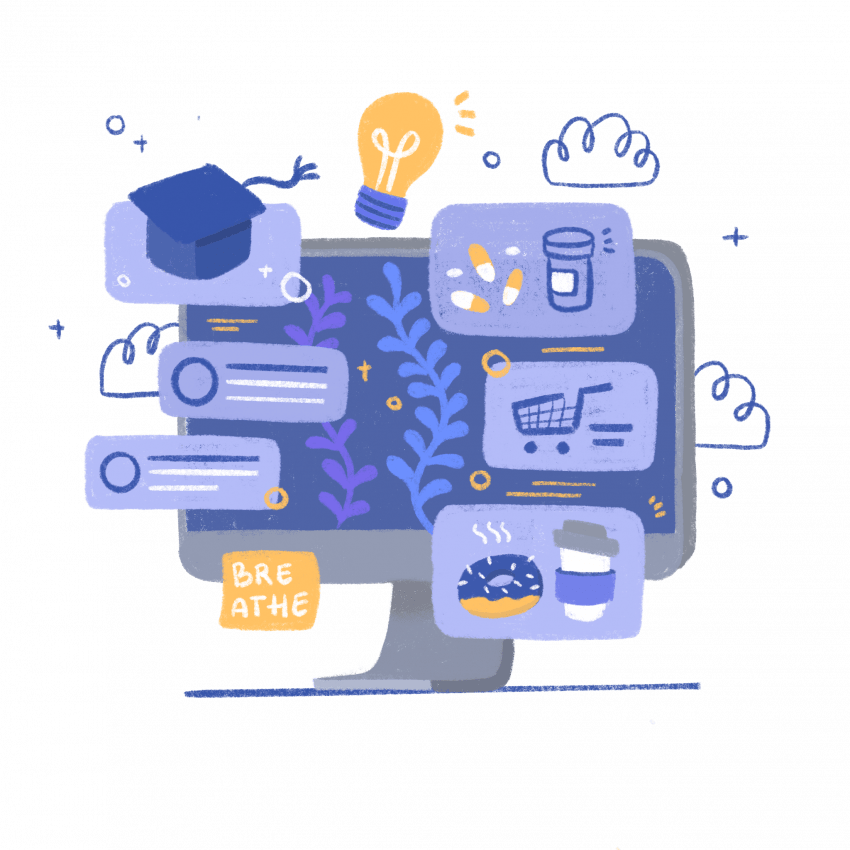
Here we go, fellow students. It’s time to put our assessor caps on, pull out some rubrics and give our online university education an evaluation.
Let’s be fair — this is an unprecedented situation. All of us, from students to staff, are navigating a new online world. By assessing the term so far with compassion, we can improve the experience for us all.
I want to move beyond grades, which have never accurately painted a picture or fully supported students’ growth. Instead, this term I want to provide as much detailed feedback as possible so our professors have more to work off of.
The biggest question I had headed into the fall was how exactly my courses would transition online.
For me, the worst-case scenario would have been professors carrying out courses as if nothing had changed, failing to adapt to the unprecedented times.
Instead, I’m happy to report, all my classes have attempted to make the transition to online school to varying degrees. Some have fully moved to asynchronous lectures and others are offering courses live, recording the lectures for viewing later too.
While I think we are slowly working out how to deliver content, the workload is an area of much needed improvement.
It seems that some professors, in an attempt to engage students online, have increased their course content and are now assigning more classwork and papers. Having spoken to many of my peers from different majors and colleges, they have never felt as overworked in their life as they do now.
While it is a positive that professors are trying something different with their courses and assessments, the reality of it is that students are constantly feeling the need to meet deadlines, rather than truly take the time to learn material.
I think it would do us all well if courses were designed with the mental health and well-being of students in mind — especially during a pandemic that has brought up unexpected health and financial challenges for many.
This means making videos by topic, rather than one video per lecture. It’s easier to digest material that has been organized into modules.
It also means restructuring assessments, with small ones offered each week to check student’s learning and fewer, bigger assessments that allow for more creativity and time.
Another aspect key to a successful online education is access to course support.
In my experience, most courses have done a good job in finding ways to make office hours and tutorials available. However, when all of our learning is largely self-directed, we need more course support than previously offered.
We need spaces to discuss course content, so it’s not only sitting in our heads. We need safe spaces to ask questions. And, so the course goes beyond the theory, we need spaces to work out problems.
I suggest all courses — from the humanities to the sciences — build into their schedule a weekly tutorial session to do just that.
In the past, meeting in person for an extra hour a week could have meant a scheduling conflict. Now, as most of us are pursuing school in the confine of our rooms, an extra hour of connection would greatly benefit us all.
Online education has been a roller coaster — no two days have been the same. And no day has looked quite like normal schooling. But by honestly evaluating our experiences so far, we can move forward to make it better.
My assessment of the situation so far is from my experience as a third-year science student in Saskatoon. I can imagine the experiences of a student somewhere else in Saskatchewan, Canada or internationally may be very different.
That is why we must continue to share our own stories and seek out the experiences of those we haven’t heard from yet.
Online education is a new journey for us all and while efforts to adapt school online are appreciated, we have a long way to go to make it a fulfilling experience.
—
Vaidehee Lanke | Opinions Editor
Graphic: Anh Phan | Design Editor